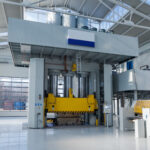How have Hyundai reduced the weight of the Hyundai Creta’s trunk floor by 20%? Using an innovative thermoplastic composite that combines a sandwich panel of PP honeycomb and GMT composite skin.
EconCore, a specialist in lightweight thermoplastic honeycomb core technology, and DPA Moldados, a tier 1 automotive supplier, have developed a technology unique in design. The thermoplastic is produced continuously while direct lamination of the sandwich skin layers is most often in-line integrated in the highly automated process.
José Carlos Ricciardi, managing director of DPA Moldados, a Brazilian Tier 1 supplier that has partnered with Econcore to develop this lightweight solution, said:
“OEMs are calling for weight reduction but unless we are talking about motorsport, they are not quite willing to accept it if the costs are higher than conventional solutions. We had been seeking a way to address this for a while working with thermoplastic composites, and on that journey, we combined forces with EconCore and their German daughter company ThermHex Waben.”

The innovation of this technology
EconCore’s solution is so effective because sandwich panels are the most suitable structure when it comes to delivering rigidity at low weight, indeed, trunk floor assemblies of many cars are made of a combination of paper honeycomb and polyurethane / glass fibre composites.
Given the high performance of the honeycomb structure, the use of material is very limited. A low-density honeycomb, when combined with skin layers, delivers a performing sandwich panel. Within Econcore’s technology, the application of skin layers takes place directly as the honeycomb core is made, all within an integrated production process delivering maximum of cost-efficiency.
EconCore also recognise that sustainability within manufacturing processes is currently at a forefront of its consumers’ minds. Tomasz Czarnecki, COO of EconCore, explained:
“With regards to recyclability, our process is using thermoplastic honeycomb core and thermoplastic T Research Center,skin layers that on their own can be already based on partly or even fully recycled materials. At the end-of-life our product, and the thermoplastic finishing carpets that automotive parts require for decorations, are recyclable. Upon moulding and integration of the carpets into the sandwich structure, they are not contaminated by other materials such as polyurethanes, so at the end of product’s life, they can be disintegrated and fully recycled.”
Additionally, EconCore’s process uses thermoplastic honeycomb core and thermoplastic skin layers that comprise partly or sometimes fully recycled materials and at the end of product’s life, the part can be easily recycled.
More information: www.econcore.com, www.dpamoldados.com.br, www.hyundai.com












